The French Rondeaux
Das französische Rondeau
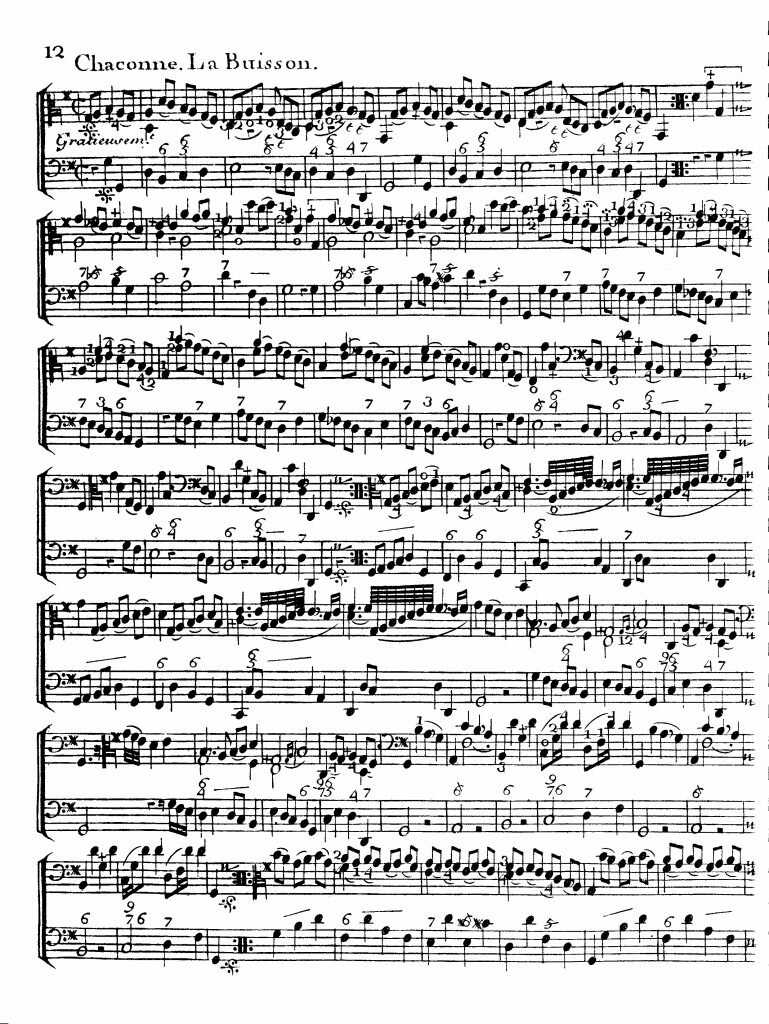
Chaconne La Buisson – Forqueray
|
The question posed by Tom Moore (Scheide Music Library, Princeton University), a person unknown to me, reads briefly as follows:
In the Chaconne, La Buisson by Forqueray, a piece written in rondo form, should the theme be repeated and should the couplets be repeated? Some speculations on this question on the part of Mr. Moore followed. Mr. Moore had the Minkoff reprint of the Forqueray edition. There is also a Fuzeau edition: very excellent. Had he taken the trouble of looking at the rest of the volume, he would have found the answer himself. Also: |
Die durch eine von mir unbekannte Person, Tom M (Scheide Music Library, Princeton University) an die Vdg-Group im Internet gestellte Frage lautet wie folgt:
In der Chaconne, La Buisson von Forqueray, ein Werk in Form eines Rondeaus, soll das Thema wiederholt und sollen die Couplets wiederholt werden? Einige Spekulationen seitens Herrn Ms folgten. Herr M. hatte die Minkoff Facsimileausgabe zur Verfügung. Es gibt auch eine Fuzeau-Ausgabe, sehr schön. Hätte er sich die Mühe gegeben, den Rest des Bandes daraufhin zu untersuchen, wäre er sehr wahrscheinlich auf die Antwort selber gekommen. Viz.: |
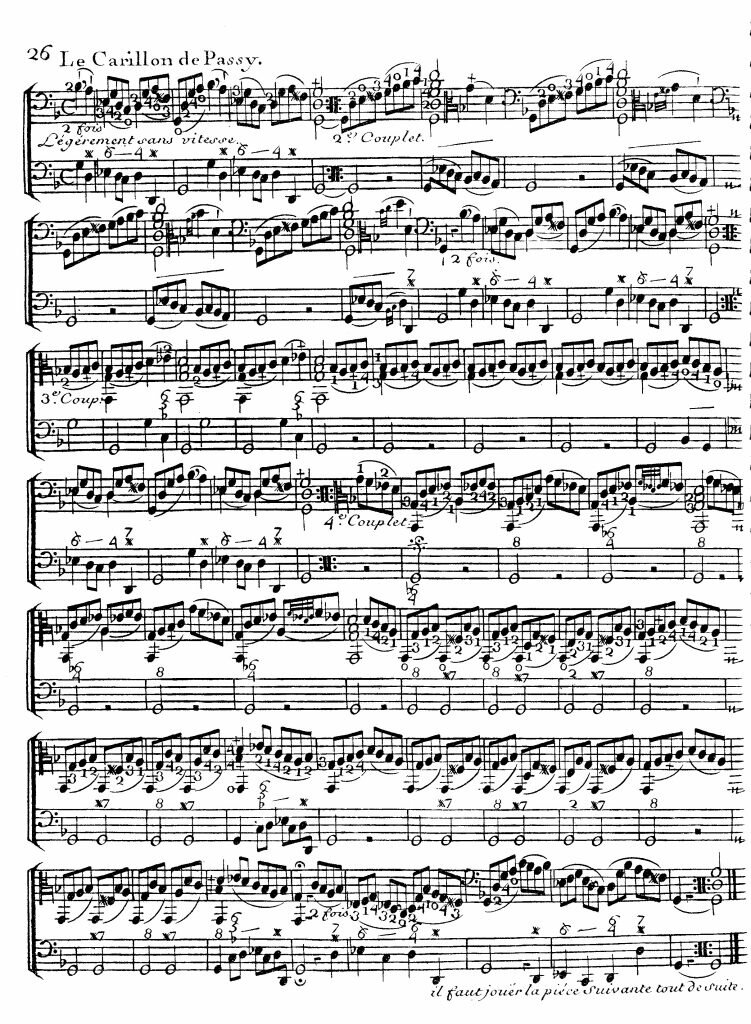
| In the two coupled rondeaux (yes, let’s use the French term), Le Carillon de Passy, consisting of a four-bar rondeau theme and three couplets (labeled 2e. Couplet, 3e. Couplet, 4e. Couplet) and La Latour (to be played “attacca”: “Il faut jouer la piéce Suivante tout de Suite”), consisting of an eight-bar rondeau theme (understood to be the “1er. Couplet”) and three couplets (labeled 2e., 3e., 4e. as above) the composer states explicitly how the repeats should be made. The theme of Le Carillon de Passy consists of four bars after which a repeat sign is to be found . This repeat sign is not the only reference to what the composer expects us to do. Forqueray then explicitly specifies under the first two notes of the theme: “2 fois”. Therefore the theme is to be repeated at the outset, making it an eight-bar statement. In the next couplet, labeled “2e. couplet” (the rondeau theme is held to be the “1er couplet”, in this case), the rondeau theme is written out – all four bars. Here again, Forqueray specifies “2 fois” under these four bars, extending them thus to eight bars. The question now is, whether the entire 2e. Couplet should be repeated or not. The answer to this is to be found at the end of the second rondeau. | In den beiden gekoppelten Rondeaux (wir lassen diese französische Bezeichnung zu?), Le Carillon de Passy, bestehend aus einem vier-taktigen Rondeauthema und drei Couplets (bezeeichnet 2e. Couplet, 3e. Couplet, 4e. Couplet) und La Latour (was attacca folgt: “Il faut jouer la pièce Suivante tout de Suite”), bestehend aus einem acht-taktigen Rondeauthema (selbstredend als “1er couplet” zu verstehen) und drei weiteren couplets, bezeichnet als 2e., 3e., 4e. couplets, wie oben, erläutert der Komponist explizit wie die Wiederholungen von statten gehen sollen. Das Thema von Le Carillon de Passy besteht ausvier Takten denen ein Wiederholungszeichen folgt. Das Wiederholungszeichen ist nicht der einzige Hinweis auf die Absichten des Komponistens: Forqueray schreibt explizit unter den ersten zwei Noten des Themas: “2 fois”. Folglich wird das vier-taktige Thema von Anfang an wiederholt, was daraus eine acht-taktige Phrase bildet. In der nächsten – eigentlich ersten – couplet, bezeichnet aber als “2e couplet” (das Thema wird für das “1er couplet” gehalten), das Rondeauthema wird ausgeschrieben – alle vier Takte. Nochmals fordert Forqueray den Spieler auf, das thema “2 fois” zu spielen: dadurch wiederum eine acht-taktige Einheit bildend. |
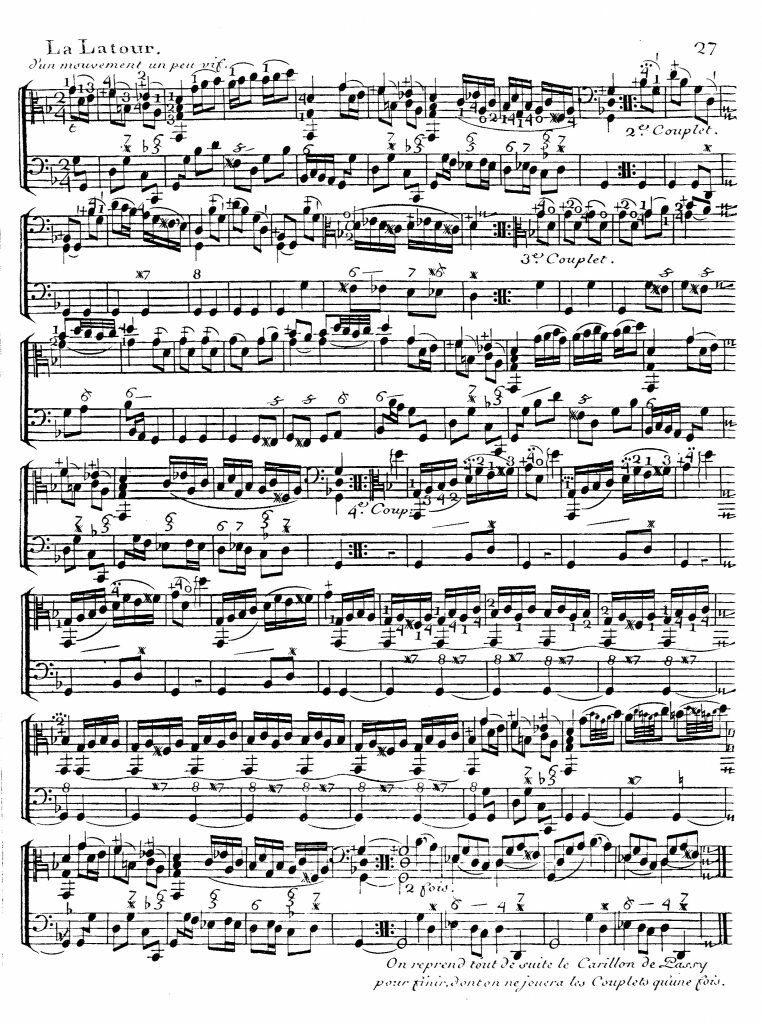
|
The answer to this is to be found at the end of the second rondeau. After completion of La Latour, Forqueray explicitly states that, “On reprend tout de suite le Carillon de Passy pour finir, dont on ne jouera les Couplets qu’une fois”. Very clear! The first time through the Carillon, one should repeat all the couplets. However, when one does the da capo after finishing La Latour, one should only play the couplets once.
Knowing this, one can now turn back to the Chaconne La Buisson. One notices that the rondeau theme is not written out after each of the couplets, but instead, Forqueray marks the repeat of the theme with a custos and a “dal segno”. The only time that the theme is written out is at the very end, because Forqueray added a final flair to the theme. It is at this point that one notices the French indication for a first and second ending, the so-called “chapeau”. This shows without a doubt that Forqueray intended at least this couplet, but by implication, all other couplets to be repeated! |
Die Frage ist jetzt ob das ganze 2e. Couplet wiederholt werden soll oder nicht. Die Antwort auf diese Frage befindet sich am Ende des zweiten Rondeaus. Nach Beendigung von La Latour schreibt Forqueray unmißverständlich: “On reprend tout de suite le Caeillon de Passy pour finir, dont on ne jouera les Couplets qu’une fois”. Sehr deutlich! Das erste mal durch Le Carillon de Passy sollen die couplets wiederholt werden, aber beim da capo nach La Latour werden die Couplets nur ein einziges mal gespielt.
Wenn man dies weiß, kann man zurück zur Chaconne La Buisson. Man merkt, daß das Rondeauthema nicht nach jedem Couplet ausgeschrieben ist, sondern von Forqueray durch ein “custos” und ein “dal segno” bezeichnet ist. Nur ein einziges Mal wird das Thema ausgeschrieben, und zwar beim letzten Couplet, weil Forqueray einen extravaganteren Schluß schreiben wollte. Aber gerade hier merkt man die französischen Bezeichnungen für einen ersten und zweiten Schluß: die sogenannten “chapeaux”. Diese beweisen jenseits jeglichen Zweifel, daß Forqueray zumindest dieses Couplet, aber, durch Implikation, alle andere Couplets, wiederholt haben wollte. |
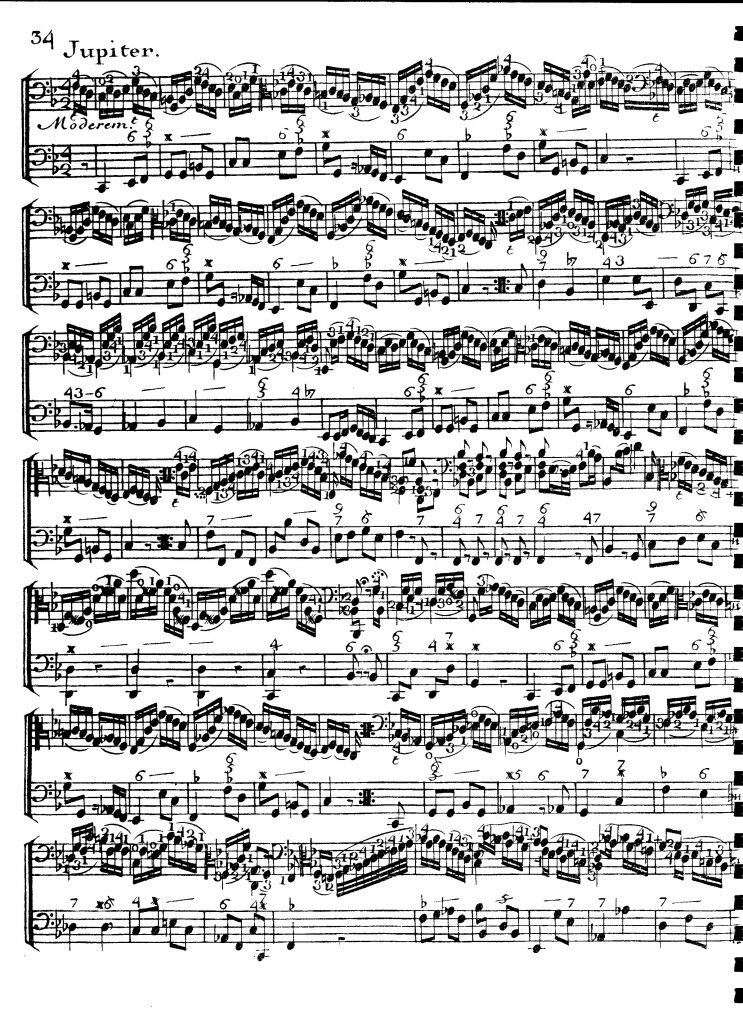
| Even more explicit than this is the rondeau “Jupiter”, which closes in a grand fashion the Ve. Suite. The repeat of the eight-bar theme itself is written out, therefor the first repeat sign should be ignored. But at the very end of the piece, the “chapeau” shows unmistakably the presence of a first and a second ending to the last monumental couplet: Forqueray really intended all couplets to be repeated! | Noch expliziter wird der Komponist bei Rondeau “Jupiter”, das die Fünfte Suite auf grandios er Weise abschließt. Die Wiederholung des Rondeauthemas ist an und für sich ausgeschrieben, weshalb eine Wiederholung nicht in Erwägung kommt. Aber am Ende des Werkes tauchen die französischen “chapeaux” auf, die unmißverständlich einen ersten und einen zweiten Schluß zu diesem letzten, monumentalen Couplet zeigen. Forqueray wollte in der Tat alle Couplets wiederholt haben! |
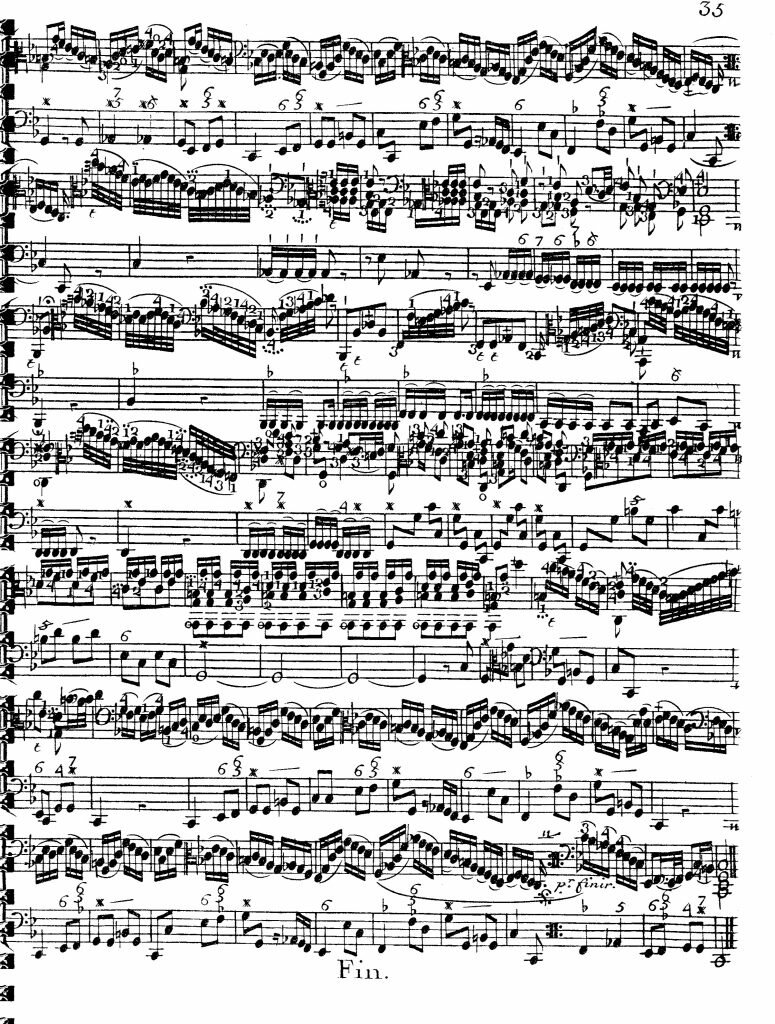
Quod erat demonstrandum
| By the way, evidence for the practice of repeating all couplets is also to be found in the works of Marais. Nevertheless there is also evidence for the practice of doing the couplets only once. | Im Übrigen, gibt es bei Marais Beweise für die Praxis der Wiederholung aller couplets.. Aber es gibt auch Hinweise für das Gegenteil…So so, la la oder eben so la. |
Prof. José Vázquez
University of Vienna, Austria